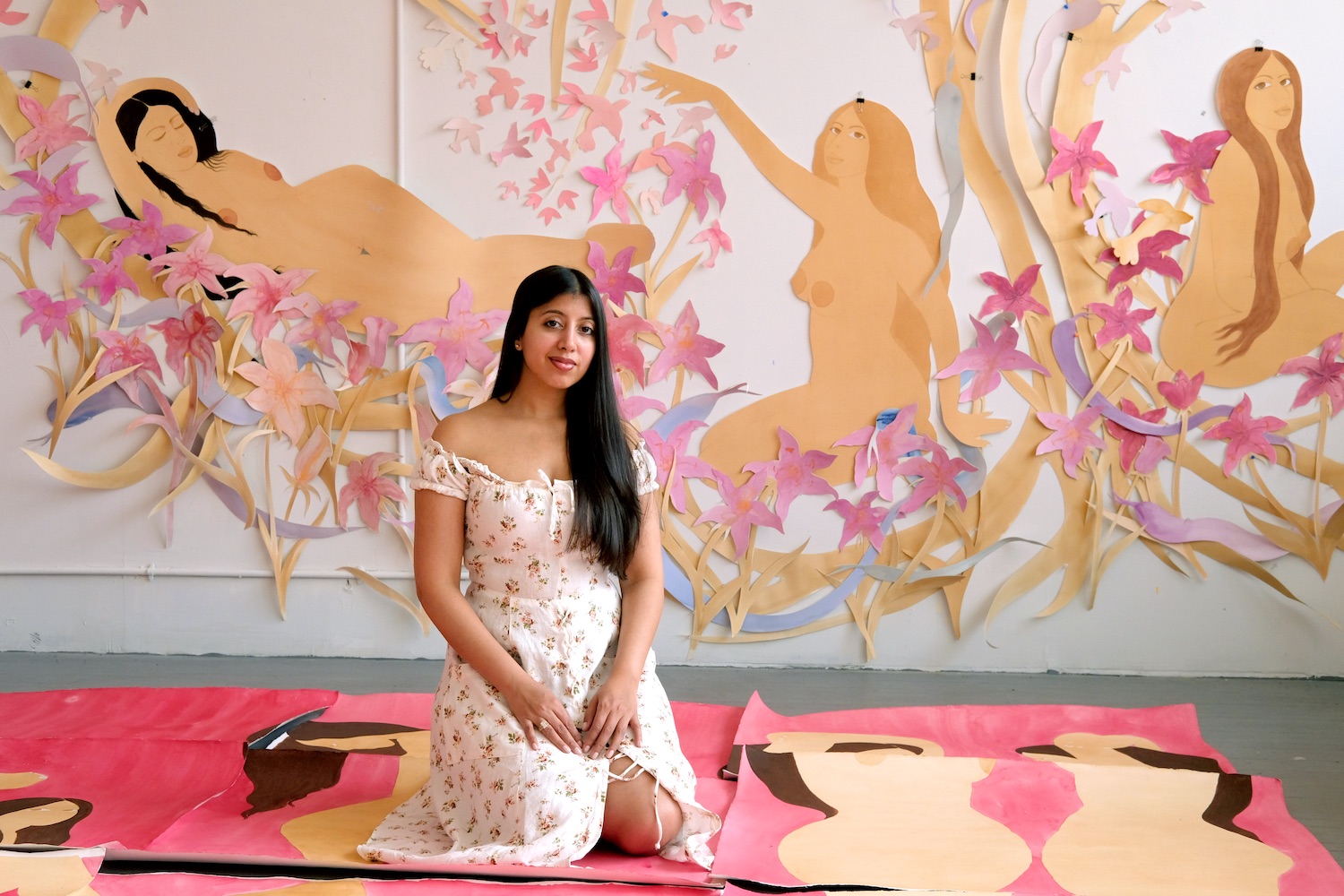Five days after the world witnessed the death of George Floyd, five cities across the United States saw his last words flutter in the sky. Led by a plane, the aerial demonstration They’re going to kill me trailed Floyd’s last words in New York City, Detroit, Dallas, Miami, and Los Angeles. The hauntingly beautiful tribute was imagined by the Dallas-based artist Jammie Holmes—a painter who publicly emerged just four years ago.
Raised in a household of women in Thibodaux, Louisiana, Holmes always expressed himself creatively but never got the start in art he truly wanted. After an oil well dried up in his hometown in 2016, a need for a new nine-to-five job led him to Dallas. Upon arriving, he walked into a museum for the very first time, attending a KAWS show at The Modern in Fort Worth. From then on, he began painting daily and never stopped. Today, Holmes is known for communicating contemporary life for Black families in the Deep South, and the deep scars that come with it.
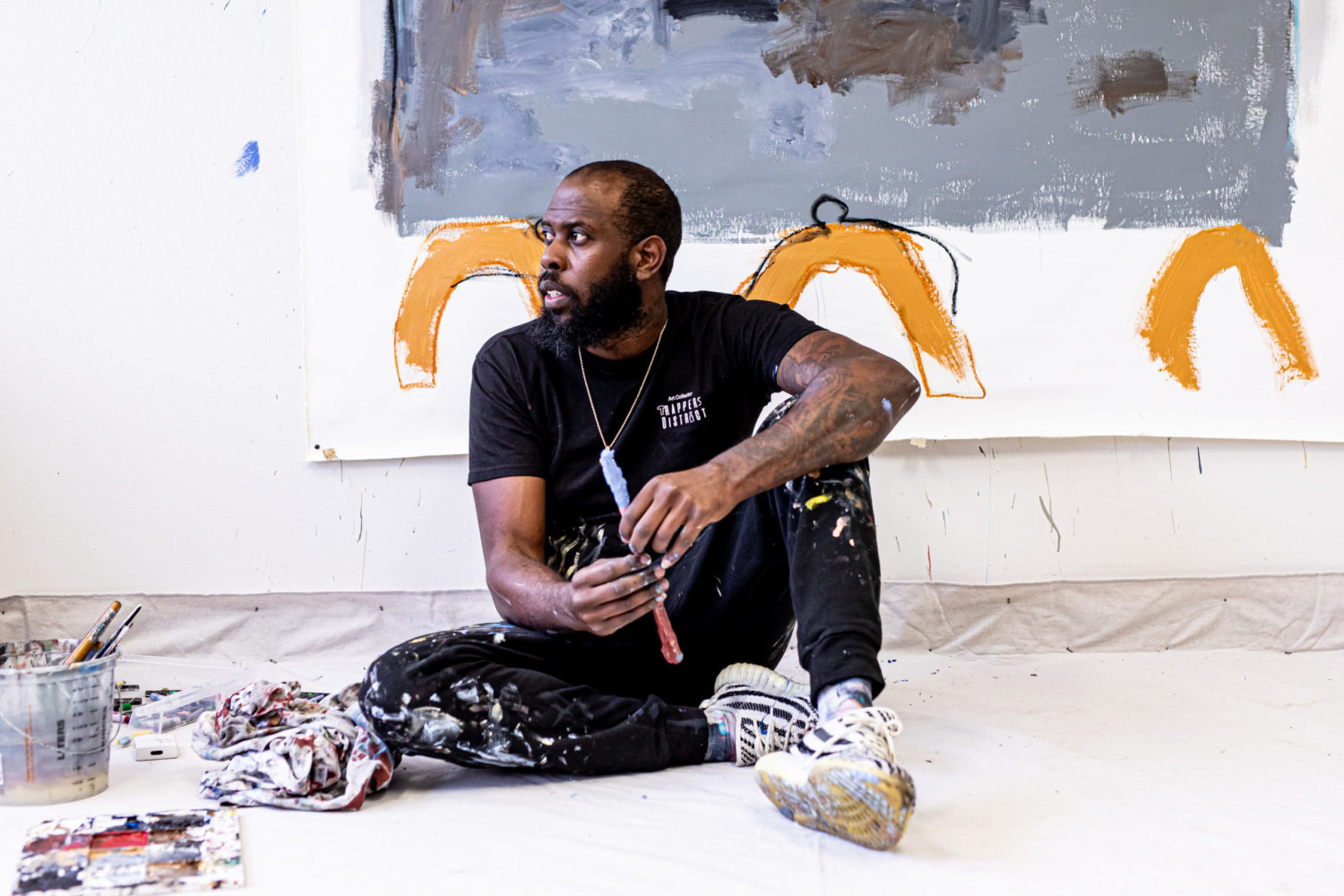
Portrait by Emery Davis, courtesy of Library Street Collective.
Last year after he began therapy, his work gained new depth, as he felt ready to address his own feelings in his practice. Previously, Holmes wouldn’t paint faces on his characters, unwilling to confront emotions. But that has since changed, and we now see the strife and happiness of everyday life in pieces like Endurance, Mama Raised Me, Fifth Grade, and Growing up in darkness. Now, these moments of vulnerability are used as an educational tool for kids who grew up like him. Whitewall spoke with Holmes about being inspired by his own stories, and how his latest works tell his tales.
WHITEWALL: Where do you typically start with a new piece?
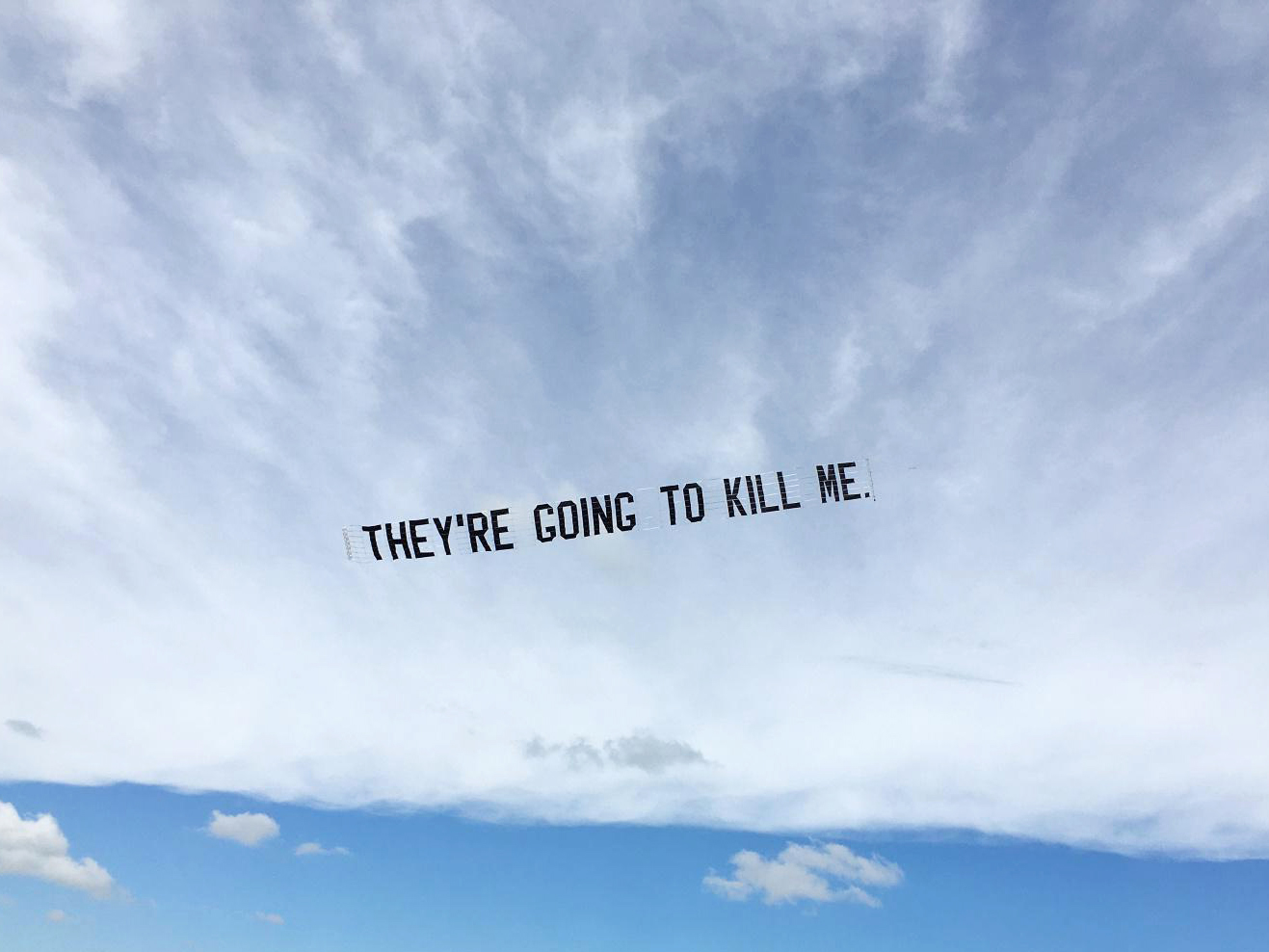
“They’re Going to Kill Me” (New York City), 2020, photo by Sue Kwon; courtesy of Jammie Holmes and Library Street Collective.
JAMMIE HOLMES: Usually, I come up with the concept in my head first. That comes from anything—driving to Louisiana, walking, pictures of myself. No matter where I’m at, if I pull out my cellphone and I’m taking notes, that’s because it’s an idea for a new painting. I have a long list of notes on my phone to inspire me, almost like a vision board. If I see a tree and it reminds me of the plum tree and my grandmother’s house, I type it in so I can be inspired from my own story. I don’t want to be inspired by someone else’s story. Sometimes I reminisce and build it in my head, but I don’t do anything if I can’t color it first in my head. I have to see it. I have to love it. And then I start messing with the canvas.
WW: How did it feel to create They’re going to kill me in response to the death of George Floyd?
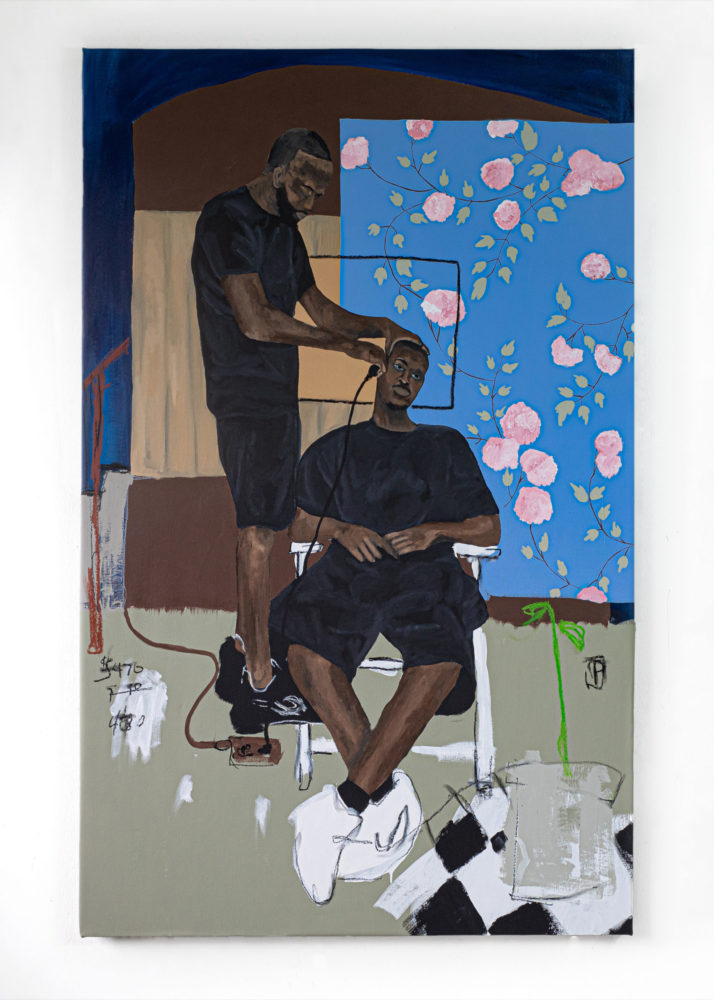
Jammie Holmes, “Endurance,” 2020 Acrylic and Oil Pastels on Canvas, 66h x 40w inches; courtesy of the artist and Library Street Collective.
JH: When I first watched the video, it was also the first time a lot of other people at Library Street Collective saw it. Everyone was emotionally connected to it. It was disgusting. Anthony Curis from the gallery reached out to see how I was doing, since he knows how passionate I am about the people in the African American community. I told him how I was feeling, we had a conversation, and we started brainstorming.
I threw out this idea, saying I wanted to do something impactful, different, and visible by more people than holding a sign in downtown Dallas. It was a lot of calls, e-mails, and texts trying to make this happen so soon, but Anthony supports every creative idea I have. He said, “Let’s make it happen.”
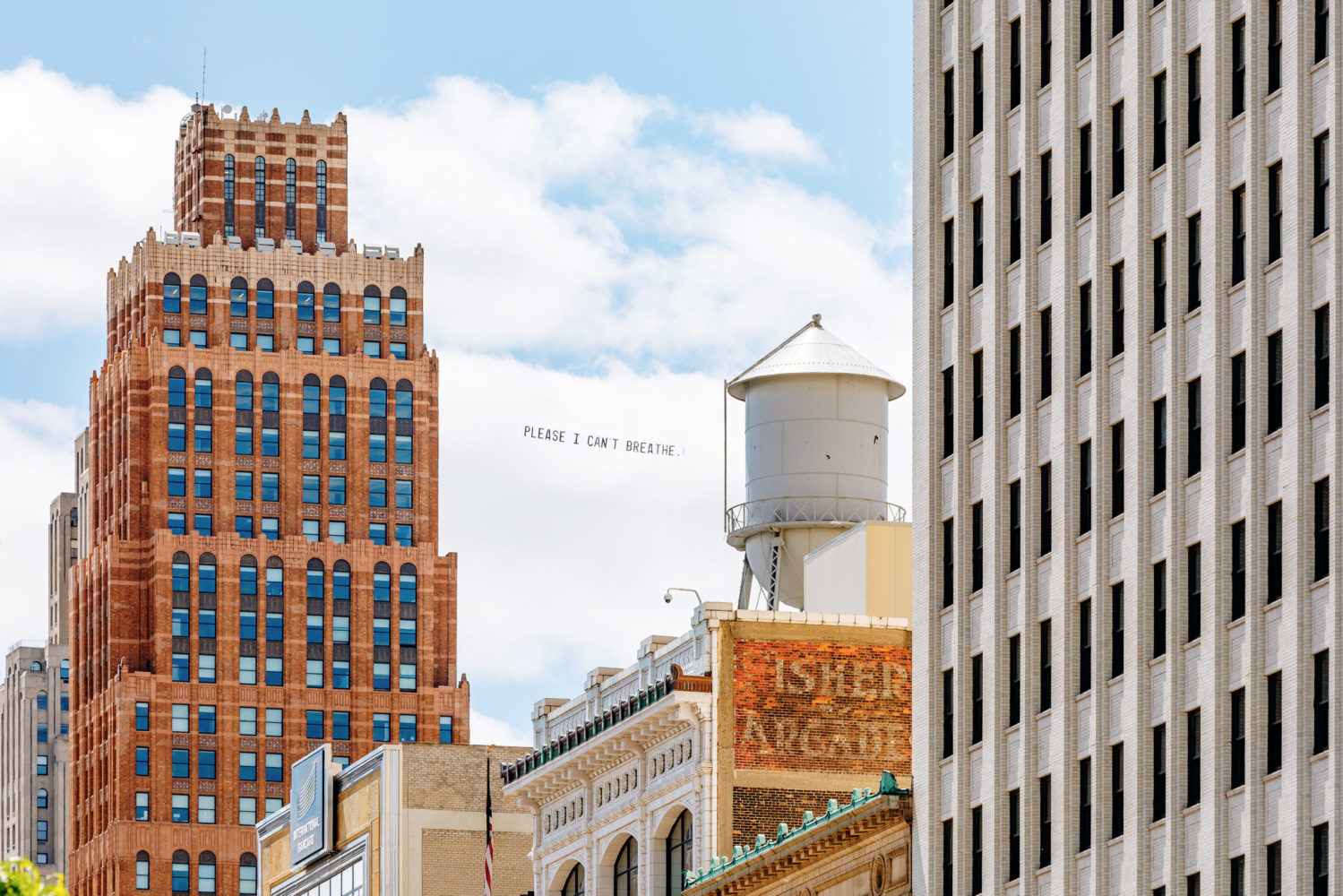
“They’re Going to Kill Me” (Detroit), 2020, photo by Hayden Stinebaugh; courtesy of Jammie Holmes and Library Street Collective.
WW: Was creating this difficult for you personally?
JH: I felt like, “This is what I do. I want to continue doing what I’m doing.” Because I have a bigger platform now, it was important that I talked to my gallery about how I’m always painting this on canvas, but it’s then either online or in someone’s house. I wanted to do something for everybody that no one could purchase. This is going to be a part of history now. Everybody gets to witness this. It was a people’s protest, and this was how I was going to do it. I had to do it as high as I could and as much as I could.
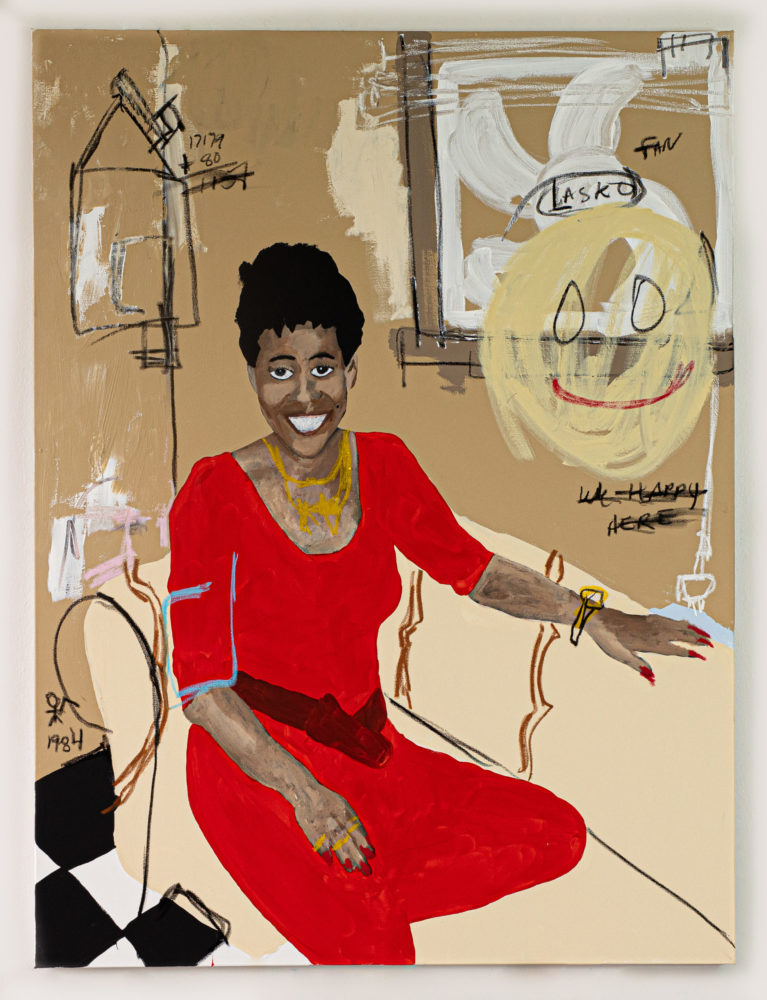
Jammie Holmes, “Mama Raised Me,” 2020, Acrylic and Oil Pastels on Canvas, 48h x 36w x 1.50d inches; courtesy of the artist and Library Street Collective.
WW: Images that were taken of the demonstration were shown in a digital exhibition through Dallas Contemporary entitled “Everything Hurts,” alongside two other preexisting paintings of yours. Why were these included?
JH: They’re both called Growing up in darkness, and I painted them last year. The whole canvas is black, the kids are Black, and the question “What if I was white?” is on there. It’s asking, “What if I was white? What if the canvas was white? What if the kids were white? How would you feel?” Those were basically telling the tale of Trayvon Martin and Tamir Rice, too. What if they were white? How would you treat them? Would you think they’re wrong? Shoot these innocent kids?
WW: You also have two works in a group show entitled “We Used to Gather” (July 18–September 18) at Library Street Collective. Can you tell us about those?
JH: One of them is Fifth Grade, and that was about kids in my city growing up too fast. I wanted to show a fifth grader having to iron his clothes before school and get himself ready. When I was in fifth grade, I walked to school. I didn’t have anybody waking me up and getting me to school. The other one is a kid sitting in a wicker chair with no shoes on his feet. That’s me putting myself back in time, saying, “We don’t know what you’re going to be. But we know you’re going to be something.”







